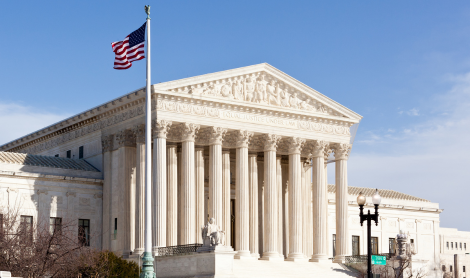By Nelson Smith, NACSA senior advisor and M. Karega Rausch, NACSA vice president of research and evaluation
Charter school growth is slowing down.
A lot of folks are conjecturing about the reasons we’re seeing this slowdown. While we don’t have definitive answers, some new NACSA research may light another candle or two.
First, what we know:
1. Startups are down while authorizer approval rates are steady
The number of new charter schools opening in a single school year peaked at 649 in 2012–13 and has fallen to just 329 in 2015–16. In a thoughtful essay that kicked off the current round of debate, Robin Lake said her colleagues at the Center for Reinventing Public Education were hearing that “charter authorizers are getting much choosier.” There’s some truth here, but it doesn’t explain the decline.
We have to keep two apparently contradictory things in mind. Yes, authorizers are setting a higher bar for new applicants. But at the same time, the rate of charter approvals has remained remarkably consistent. Over the past five years, large authorizers have given the thumbs-up to about 35 percent of applications annually.
So what’s happening is pretty much the reverse of what critics suspect. If authorizers are approving the same percentage of applications despite tougher approval practices, it means they’re saying yes to charters that might not have made it five years ago. Maybe the good work of incubators is paying off, and more applicants head into the starting gates ready to gallop. Maybe more authorizers are finding ways to encourage first-timers to try again after refining their applications. Maybe authorizers are getting smarter at differentiating strong from weak applications.
2. Net growth is slowing
Net growth is the number of charter openings minus closures in a given year, and shows whether the overall number of charter schools in operation is expanding. While we almost always want to see a robust rate of startups, some cities and states will see a pause in net gain if the poor-performing schools they close in a given year outnumber the new ones they open. That’s what happened in Ohio last year, and meant that overall quality was likely to improve.
So, if approval rates are steady, but overall growth is down, does that mean authorizers are shutting down so many schools that they’re crimping overall growth?
Look again at NACSA’s numbers. The overall closure rate among large authorizers is fairly steady: For four years running, the percentage of any charter closing for any reason was within a range of 3.7 to 3.8 percent, then dipped to 2.8 percent in 2015–16. We don’t know if this one-year decline will sustain, but we do know what caused it: The rate at which charters were renewed at the end of their term held steady, but the rate at which charters were revoked fell. In other words, there were fewer charters going belly-up mid-term due to poor financial management or disorderly operations.
So there’s something of a silver lining in the net growth stats. Either charter schools are doing a better job of running a tight ship, or authorizers are getting wiser about approving strong operators in the first place. Or both.
3. Applications are way down
The fact is that one phenomenon is driving both the slowdown in startups and the erosion in net gain: the number of applications authorizers receive has plummeted in recent years. It peaked in 2011–12 at roughly 18 apps per authorizer, and has fallen each year since to a low of about seven in 2015–16.
The question we should be trying hardest to answer, then, is this: WHY are authorizers receiving fewer apps?
Consider these possibilities:
Are we meeting parent demand in new ways?
There may be multiple reasons for the growth slide, but parent demand isn’t one of them. In a 2016 survey the National Alliance for Public Charter Schools found about 70 percent of parents said they’d like to see a charter open in their neighborhood. The survey concluded there are potentially at least another 2 million students whose parents would enroll them in charter schools if they could. So, demand is far from met, but it’s being addressed in new ways. While we wonder about fewer charter schools, the number of charter students continues to climb, averaging around 200,000 more per year—with a healthy six percent overall gain in 2015–16. But these kids aren’t necessarily heading into new schools. Maturing charters are filling out grade spans. While some successful operators apply for a new charter to replicate, others simply get permission to expand at the original site.
Are today’s entrepreneurs more timid?
Some observers like former Walton Foundation official Ben Lindquist point to an erosion in the numbers of potential charter entrepreneurs and their willingness to take risks in a by-the-numbers accountability environment. This timidity may not be an isolated phenomenon. Charters are not just schools but also enterprises that depend on capital, talent, and other factors that affect new business formation. The Bureau of Labor Statistics finds that startups took a dive even before the Great Recession, then turned positive around 2010. The Kauffman Foundation, which studies and promotes entrepreneurship, sees dramatic upticks on several indicators of entrepreneurial effort and small-business activity in 2013–14. Chartering may have caught the flu from these weakening trends, and may now be poised to recover.
Are we facing new competition?
Since 1992, talented folks have opened charters because there were few other ways to get a new idea planted. That’s changed. Partly in response to competition from charters, districts like Shelby County (Memphis) and Indianapolis are creating innovation zones where leaders enjoy new autonomies. Energetic entrepreneurs are exploring entirely new types of ventures. In Massachusetts, Chris Gabrieli’s Empower Schools is a sort of “general contractor,” working with districts to find both charter and non-charter solutions to the need for school turnaround. LearnZillion co-founder Eric Westendorf was academic director of a successful D.C. charter school but chose to pursue a startup with much broader reach—and there are many such examples.
Does money play a role?
There is debate about the role of startup funding in all of this. In 2011, the federal Charter Schools Program shifted from awarding funds liberally to requiring serious state plans. As a result, just two state education agency grants were awarded that year, and some states have gone unfunded for years. It’s more than coincidence that the rate of new charters fell off the cliff just as the supply of federal funding tightened. Local and state revenues should be on the radar as well, since there has been an erosion of regular per-pupil funding nationally. Current expenditures per student peaked in 2008–09 at $11,621 and have decreased since then. But the falloff has been sharper in some states with many charters: a 5.7 percent drop in California between FY2010 and FY2014; a falloff of 11.6 percent in Arizona. This could make the difference between go and no-go for an operator on tight margins.
As Mark Twain might have said, reports of this movement’s demise are greatly exaggerated. We’ve got a new federal law that opens the door to innovative measures of school quality, a Congress and administration that are telling states to shoot for the moon, and the prospect of major new federal funding for charter schools. The stars are aligned for a comeback that will even impress Patriots fans.


